By Carol Cofone
In English, we have two words to help us understand how we feel about where we live: “house” is the physical structure; “home” is the emotional shelter. Not so in Italian. The word casa means house, and it means home, and it also means dynasty—as in the instance of the Casa Boncompagni Ludovisi, the Roman noble family that counts its lineage back to the 10th century AD.
These definitions can help us see how four generations of the family in the 19th and earlier 20th centuries who had ownership or access to a stunning array of properties felt about them. Their sensibilities were likely complex and confounding. For these four generations—whose birthdates encompass the period from ca. 1830-ca. 1910—the wonders of these castles and palaces, villas and tenute, perhaps seemed even commonplace. At any rate, in this period we do not find much evidence for the family indulging in a hedonistic enjoyment of the luxuries that attended their lives.
This ethos was sustained not least thanks to the influence of Agnese Borghese Boncompagni Ludovisi, born on 5 May 1836, and—as we shall see—from her earliest childhood instilled by her maternal grandmother with a “Borghesian” sense of the duty of nobility. Agnese married Rodolfo Boncompagni Ludovisi, Prince of Piombino (VIII), on 31 May 1854, and died on 22 March 1920 at the age of 83. All six of the couple’s children survived them.
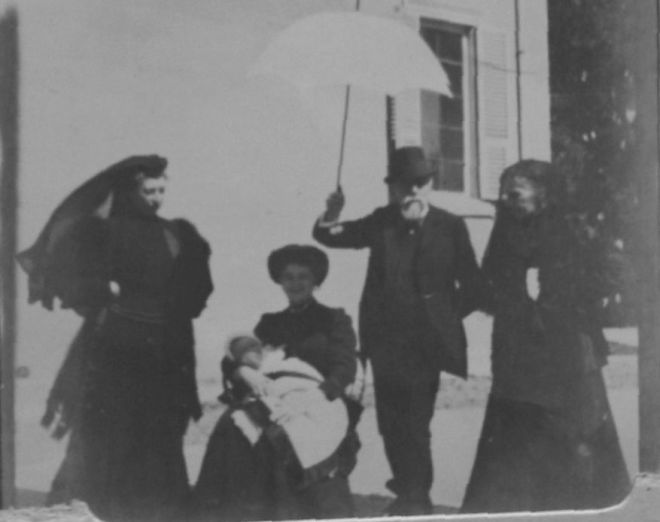
Four generations of the Boncompagni Ludovisi posing in 1909 at their villa La Quiete, near Foligno. Generation I (fourth and fifth to right): Rodolfo (1832-1911) and Agnese (1836-1920) Boncompagni Ludovisi. II (furthest left): their daughter Guendalina (1859-1942); III (seated): Nicoletta Prinetti Castelletti (1891-1931), wife of their grandson Francesco Boncompagni Ludovisi (1886-1955); and IV (in arms): that couple’s daughter Laura (1908-1975). Collection of HSH Prince Nicolò and HSH Princess Rita Boncompagni Ludovisi, Rome.
Ugo Boncompagni, the eldest son of Rodolfo and Agnese, understood the nobility’s sense of duty particularly well. His biography almost withstands belief. Born in Rome on 8 May 1856, he married Vittoria Patrizi-Naro-Montoro on 7 October 1877, had two daughters, but was widowed in 1883. He remarried Laura Altieri on 6 July 1884, fathered a son and two daughters, but was widowed yet again in 1892. Ugo renounced a future claim to the Principate of Piombino in favor of his son Francesco (born 1886), and decided instead to serve the Church. He took Holy Orders, was ordained in 1895 and appointed, in 1921, Vice-Camerlengo, i.e., assistant to the Cardinal who among other things administers the Roman Catholic Church in the interregnum between Popes.
Ugo also managed to author six books, ranging from a four volume history of Rome in the Renaissance (1928), to a personal memoir I ricordi di mia madre, published in 1921, shortly after the death of his mother Agnese. In a passage from that book, he talks about the values that his mother inherited from her own maternal grandmother (and godmother), Princess Adele de la Rochefoucauld Borghese (1793-1877), the widow of Prince Francesco Borghese (1776-1839) [translated from the Italian by C. Cofone]:
“Casa Borghese: Princess Donna Adele, although always skilled, was very young, and from a very different and deeply religious environment, and this imprint gave all her children who followed her the feelings of unshakeable faith. For this reason, while the utmost decorum reigned in the house, not only was the life of the individual nurtured to be always morally perfect, but also their habits remained simple. There was all that luxury, that grandeur of the surroundings that one could consider, and was, a duty imposed by high social position, but there never was personal luxury, and only as much elegance as was strictly necessary to comply with the duties of caste.”
“In that healthy environment, intellectually elevated by the abundance of readings and by many international relations, three brothers, Marcantonio [1814-1886], Camillo [1816-1902] and Scipione [1823-1892], but not their sister Maria ([1812-1838] who married in France Count Henry, later Duke of Mortemart, and died almost immediately) grew up under the direction of their mother, who effectively exercised the greatest influence over them, an influence she maintained as long as she lived, that is, for more than eighty years.”

The Princess of Piombino, Agnese Borghese (1904). Reproduction of original portrait by Giorgio Szoldatics (1873-1930).
Added to this notion of possessions-as-obligation was the experience of the Boncompagni Ludovisi of living through a time of dramatic change. The four generations in question witnessed everything from the economic and social upheaval occasioned by the Industrial Revolution to the foment of the First and Second World Wars—and indeed the Cold War and Vietnam. But in particular the Italian Risorgimento, which established Rome as the capital of the newly unified country, had a major impact on the family. Despite the conspicuous claims the family had to both sides of the Papal-Italian conflict, the Risorgimento exposed the Boncompagni Ludovisi to a very public displacement from the major part of their most famous possession, the Villa Ludovisi. This ancestral home in Rome, established in 1621, was developed starting in 1885 into the Rione Ludovisi which encompasses today’s Via Veneto.
At the time of the major changes occasioned by the lottizzazione of the Villa Ludovisi, their principal summer home—La Quiete in Foligno (Umbria)—became their refuge. It was the birthplace of two children, the site of the wedding of another, and the locale for celebrations of Easter. The rich photographic record preserved in the Archivio Digitale Boncompagni Ludovisi goes some way toward helping us understand how that house became a true home.
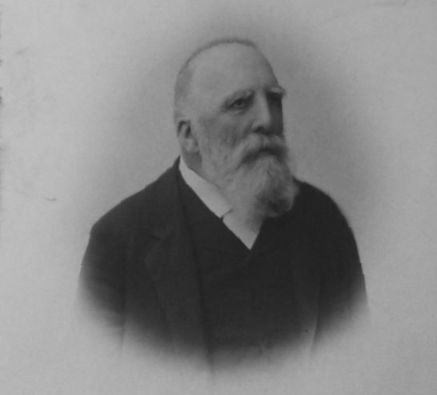
Rodolfo Boncompagni Ludovisi, Prince of Piombino (VIII) from 1883-1911, pictured around 1900. Collection of HSH Prince Nicolò and HSH Princess Rita Boncompagni Ludovisi, Rome.
But first a word on some of the family connections of the Casa Boncompagni Ludovisi in the later nineteenth century. When we consider the family patriarch Rodolfo, Prince of Piombino (VIIII) from 1883-1911, in the context of his family tree, we see
—his daughter, Maria (1869-1946), married in 1888 a Caffarelli (Francesco, 1865-1962, Duca di Assergi [IX]).
—his granddaughter, Guendalina (1878-1951, daughter of Ugo and his first wife Vittoria Patrizi), married on 25 November 1897 a Malvezzi Campeggi (Antonio, born 1870 and died 8 April 1900, just two and a half years after the wedding)
—his grandson Francesco’s wife, Nicoletta (1891-1931, married in 1908), was born a Prinetti Castelletti
Each one of these family connections also came with real estate. Magnificent properties, many still maintained today, display a grandeur that cannot be recreated today.
The Boncompagni Ludovisi at Pelago (Villa di Fontallorso)
When Rodolfo’s daughter Maria Boncompagni Ludovisi married on 24 October 1888 Francesco duca Caffarelli, Duca d’Assergi, their principal home was the Palazzo Cesi in Rome, in the shadow of St. Peter’s (on todays’s Via della Conciliazione). But in 1895 Francesco sold that to the Salvatorians (Society of the Divine Savior); since 2004 it houses an elegant hotel. In Tuscany however the couple maintained the “Villa di Fontallorso” in tiny Pelago, spectacularly situated amidst wooded hills some 25km east of Florence.
Today Fontallorso lives on as The Oneness Diksha Family House, which its proprietors describe as “immersed in a boundless natural park…currently one of the most important Diksha meeting point in the whole [of] Italy”.
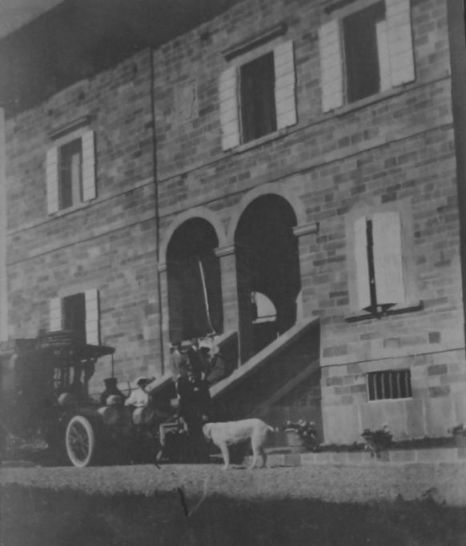
Francesco and Nicoletta Boncompagni Ludovisi at Villa di Fontallorso (Tuscany) on the 1st or 2nd of October 1908. The couple are here shown departing for Foligno (Umbria); their first child, Laura, would be born in Rome not quite two months later. Collection of HSH Prince Nicolò and HSH Princess Rita Boncompagni Ludovisi, Rome.

Francesco and Nicoletta Boncompagni Ludovisi at Fontallorso in 1910, visiting Francesco’s aunt Maria Boncompagni Ludovisi and her husband Francesco Caffarelli. Collection of HSH Prince Nicolò and HSH Princess Rita Boncompagni Ludovisi, Rome.

The “Villa di Fontallorso” today, reincarnated as the Oneness Diksha Family House
The Boncompagni Ludovisi at Bagnarola di Budrio: the Ville Malvezzi Campeggi
On an even grander scale, consider Bagnarola in the comune of Budrio, where the Bolognese nobles the Malvezzi Campeggi had constructed two massive residences in that area’s complex of large villas. As we have seen, late November of the year 1897 saw the marriage of Ugo’s eldest daughter Guendalina (born 1878) and Marchese Antonio Malvezzi Campeggi (born 1870). But Antonio Malvezzi Campeggi—known to his family members as “Tonino”—died within the space of a few hours on 8 April 1900, aged 30. He is buried in the Certosa of Bologna, commemorated with a stirring Latin epitaph. Though Guendalina outlived her husband by 50 years, she never remarried.
Their home—the Villa Malvezzi Campeggi “Il Floriano”—initiated by Monsignore Floriano Malvezzi in 1737, has been called the “Bolognese Versailles.” Certainly the most striking external attribute is the long, neoclassical facade to the south, constructed in 1818 by the architect Angelo Venturoli. Though the Villa sustained considerable damage in the Second World War, it remains significantly intact—and in the family’s possession. The period photos below document a September 1908 visit of the recently-wed Francesco and Nicoletta Boncompagni Ludovisi to Francesco’s half-sister Guendalina at Bagnarola, with her deceased husband’s brother and family in attendance.

Southern facade of the Villa Malvezzi Campeggi; late September 1908. Here Francesco and Nicoletta Boncompagni Ludovisi are making preparations to travel from Bagnarola to Bologna by automobile.

At Bagnarola, in late September 1908, adults from left: Francesco Boncompagni Ludovisi, Carlo Malvezzi Campeggi (1873-1936, brother of the late Antonio), Francesco’s half-sister Guendalina Boncompagni Ludovisi (widow of Antonio), Francesco’s wife Nicoletta, and Carlo’s wife Giulia Paccagnella (1882-1954). Married in 1902, Carlo and Giula Malvezzi Campeggi would have seven children in all, of whom four are pictured in foreground here.

At Bagnarola, late September 1908: Francesco Boncompagn Ludovisi is at the wheel of the car, joined by Vittoria Malvezzi Campeggi; in rear, Guendalina Boncompagni Ludovisi, Carlo Malvezzi Campeggi, and Francesco’s wife Nicoletta. This and two photos above are from the collection of HSH Prince Nicolò and HSH Princess Rita Boncompagni Ludovisi, Rome.
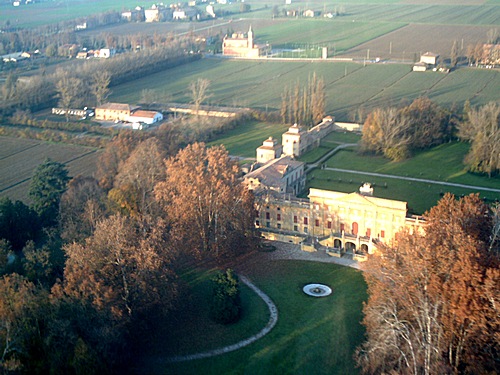
In this modern aerial view, we can appreciate the beauty, and the size, of “Il Floriano” at Bagnarola. Even from this elevation, the dramatic staircase entry can be seen.
The Boncompagni Ludovisi at Merate: Palazzo Prinetti and “Il Subaglio”
The family of Nicoletta Boncompagni Ludovisi (19 March 1891-2 March 1931), the Prinetti Castelletti, had its origins in an old patrician Milanese family (the Castelletti); they assumed the surname Prinetti in the 16th century for dynastic reasons. Nicoletta was the daughter of Marchese Giulio Prinetti Castelletti (1851-1908) and Francesca d’Adda Salvaterra; she was the only one of their four children (all daughters) to live past her first year.
The Prinetti Castelletti included important figures of the Risorgimento: one great-uncle Ignazio was made Senator of the Regno di Sardegna in 1860, and a great-uncle Carlo was named Senator of the Kingdom in 1874. As it happens, Nicoletta’s family played a pioneering role in the burgeoning auto industry. Her father Giulio with his relative Augusto Stucchi developed in Milan some of the earliest motored tricycles and quadricycles under the company name Prinetti & Stucchi. When Giulio left the partnership to serve as Italy’s Minister of Foreign Affairs (1901-1903), so did their chief designer Ettore Bugatti. And the rest is history, as they say.
Giulio Prinetti’s two years as Minister included his signing a renewal of the 1882 Triple Alliance between Germany, Austria-Hungary and Italy in 1902; on 8 June of that year he even fought a public duel against a member of the Chamber of Deputies, Leopoldo Franchetti. But in 1904 Giulio was struck with apoplexy in the presence of King Victor Emmanuel, and after a period of severe decline died four years later.
Nicoletta herself played an important social role in her all-too-short life, as will be seen in future posts. When she married Francesco Boncompagni Ludovisi in 1908, she also brought with her a connection to a number of important properties, particularly in Merate, a town in the province of Lecco, in the northern Italian region of Lombardy, where the Prinetti Castelletti had long been prominent. Her grandfather Luigi Prinetti served as sindaco of the town from 1864-1870.
Chief among the properties is the early 18th century Palazzo Prinetti, known also as Castello di Merate. It is known for its distinctive high cylindirical tower; apparently the original plan called for four such towers, but only one was built. The Palazzo came into the possession of the Prinetti family in 1810. In 1892 Nicoletta’s father Giulio Prinetti introduced substantial enhancements to the property. Since 1946 it has belonged to the Parrocchia di Merate, which today uses it for concerts, exhibitions and the like.

Castello Prinetti in September 1909, from the photo alnum of Francesco Boncompagni Ludovisi. Collection of HSH Prince Nicolò and HSH Princess Rita Boncompagni Ludovisi, Rome.
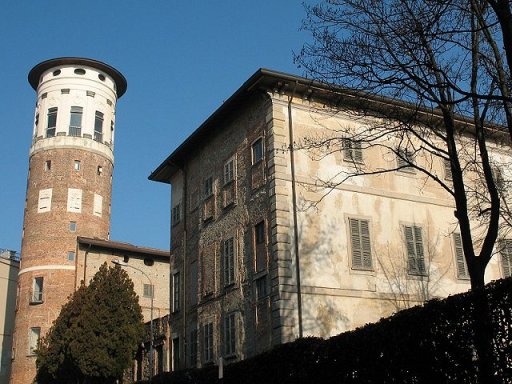
Palazzo Prinetti at Merate today.
But that was just a start. Near Merate the Prinetti Castelletti had a sumptuous villa, “Il Subaglio“, equally famed for its gardens and interior. The name is derived from the original owners of the property, a noble family that died out around the year 1660. The villa itself is a construction of the early 1700s, and belonged to the Rescalli and Sala families before passing to the Prinetti Castelletti. No longer a private residence, today it hosts weddings, receptions and meetings.

Photos above: Francesca d’Adda, mother of Nicoletta Prinetti Boncompagni Ludovisi, hunting at “Il Subaglio” in 1899. In the lower photo can be seen Umberto I, King of Italy from 1878 until his assassination at Monza 29 July 1900. Collection of HSH Prince Nicolò and HSH Princess Rita Boncompagni Ludovisi, Rome.
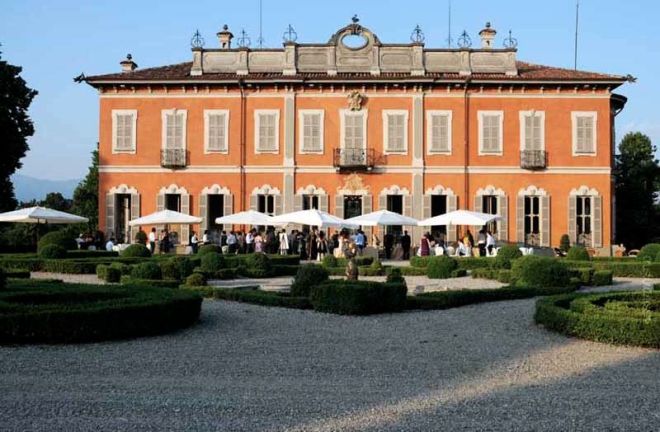
The Villa Subaglio today
The Boncompagni Ludovisi at Varallo Sesia: Palazzo d’Adda
Another property with Boncompagni Ludovisi connections—this time in the Piedmont region in the province of Vercelli—was the Palazzo Scarognini d’Adda a Varallo Sesia. This villa at Varallo in effect came to the Prinetti family with the marriage of Giulio Prinetti Castelletti to Francesca Maria d’Adda Salvaterra (1860-1920) on 4 December 1886.
The Palazzo formally belonged to Francesca’s father Luigi d’Adda until his death in 1915. Luigi was the last male descendant of his branch of the d’Adda family, and he bequeathed it to his daughter Francesca—the mother of Nicoletta Prinetti Boncompagni Ludovisi. Francesca herself died in 1920, and (apparently) left the Palazzo at Varallo to her only child, Nicoletta.
On 11 June 1925, Laura Boncompagni Ludovisi, eldest child of Francesco and Nicoletta, married Annibale Brandolini d’Adda in Rome. He was aged 26, and she was not quite 17. The new couple took possession of the Palazzo. But in 1935 Laura decided to sell this casa at Varallo, its furnishings and indeed a good part of its archives.

Above, two views of the Palazzo d’Adda at Varallo from September 1909, from the album of Francesco Boncompagni Ludovisi. Collection of HSH Prince Nicolò and HSH Princess Rita Boncompagni Ludovisi, Rome.
In Part II of this post, we turn at last to “La Quiete” at Foligno, the Umbrian villa that played such an enormous role in the life of the Boncompagni Ludovisi family in the later 19th and earlier 20th centuries.
About the author: Carol Cofone is a senior at Rutgers University, pursuing a second degree in Italian. She is a recipient of the 2013 Rutgers Academic Excellence Award. She received her original degree from Syracuse University. She works in advertising as a Planner on brands such as Aetna, Accenture and the San Francisco Opera Guild. While at Ogilvy, she led the effort on the Dove “Real Beauty” strategy. She also enjoys ballet, and recently danced in Keigwin + Co’s Bolero at the Two River Theater Company.

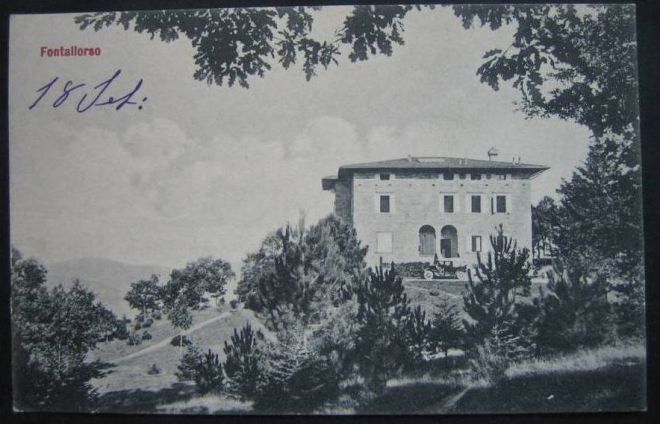
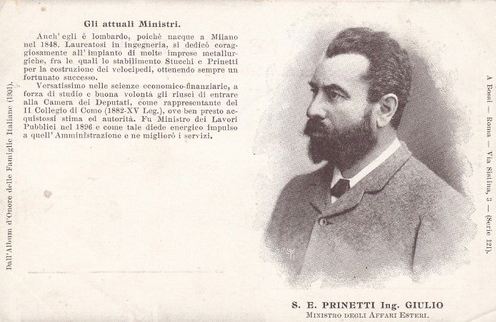

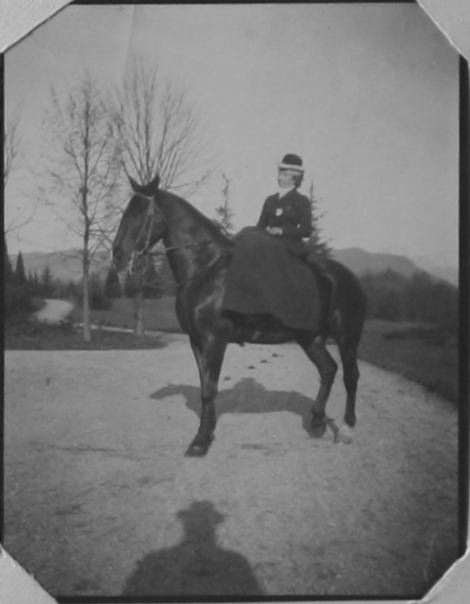
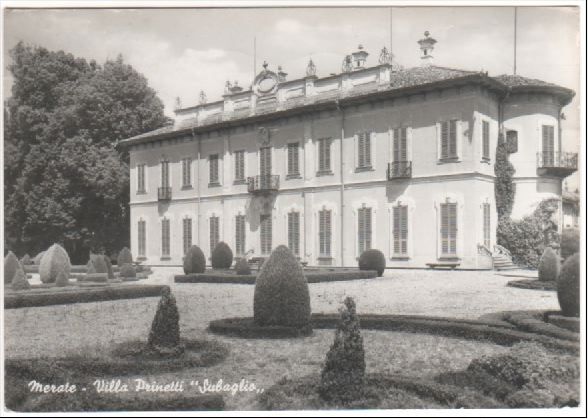


Spettabile Archivio Boncompagni – Ludovisi , buongiorno.
Sono Marco Montesi , il fortunato possessore di Villa Caffarelli ( Fontallorso , Pelago ) . Avrei bisogno di poter accedere ai documenti relativi all’anno di costruzione della Villa e del suo accesso alla attuale strada Provinciale. Questi documenti sono di fondamentale importanza per me.
Vi ringrazio se potrete accontentarmi,
cordiali saluti
Marco Montesi
Grazie tante—Lei potrebbe scrivermi ed io Le risponderò volentieri con detagli: tcbr@classics.rutgers.edu